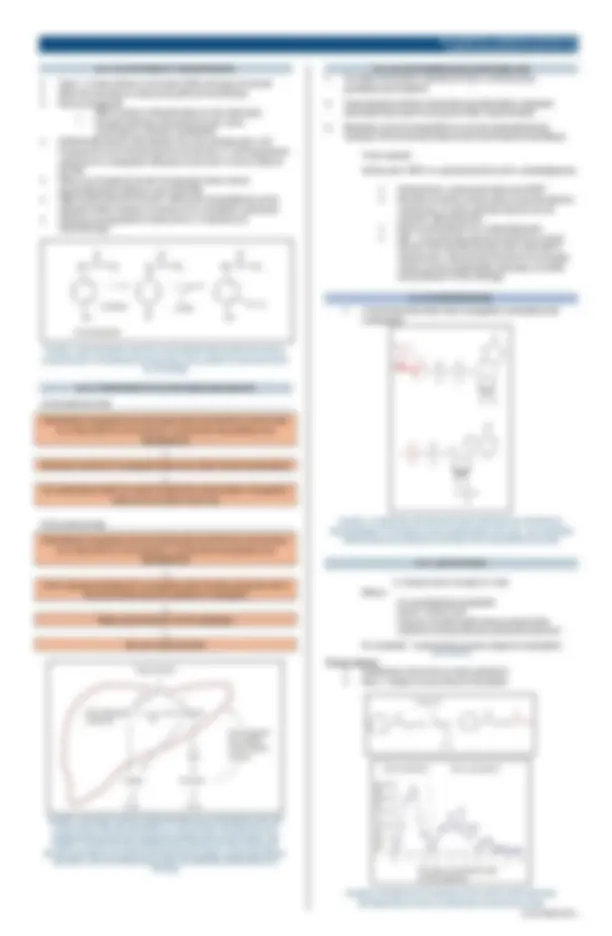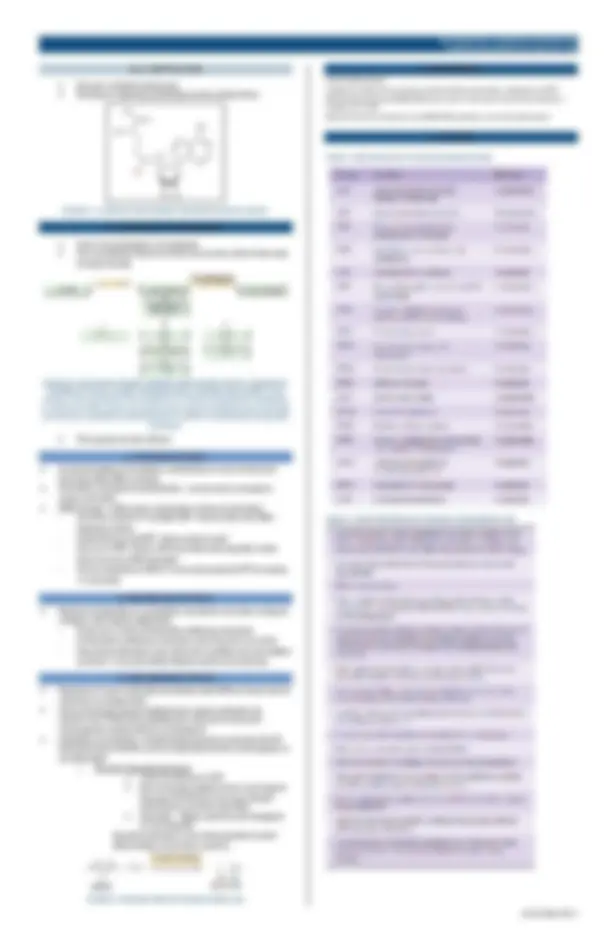




Study with the several resources on Docsity

Earn points by helping other students or get them with a premium plan


Prepare for your exams
Study with the several resources on Docsity

Earn points to download
Earn points by helping other students or get them with a premium plan
Community
Ask the community for help and clear up your study doubts
Discover the best universities in your country according to Docsity users
Free resources
Download our free guides on studying techniques, anxiety management strategies, and thesis advice from Docsity tutors
Xenobiotics reviewer based on Harpers Biochemistry
Typology: Study notes
1 / 4

This page cannot be seen from the preview
Don't miss anything!



HARPER’S BIOCHEMISTRY TRANS (31ST^ ED) OUTLINE I. INTRODUCTION A. DEFINITIONS B. CLINICAL IMPORTANCE B.1. MAIN XENOBIOTICS OF MEDICAL IMPORTANCE II. PHASES A. PHASE 1 A.1. CYTOCHROME P A.1.1. NOMENCLATURE A.1.2. ISOFORMS OF CYTOCHROME P A.1.3. OVERLAPPING SPECIFICITY B. PHASE 2 B.1. GLUCURONIDATION B.2. SULFATION B.3. GLUTATHIONE CONJUGATION B.3.1. GLUTATHIONE S-TRANSFERASES B.3.2. TRANSPORT OF GLUTATHIONE CONJUGATES B.3.3. GLUTATHIONE ROLES IN METABOLISM B.4. OTHER REACTIONS B.4.1. ACETYLATION B.4.2. METHYLATION III. RESPONSES TO XENOBIOTICS A. TOXIC EFFECTS B. IMMUNOLOGIC EFFECTS C. CARCINOGENIC EFFECTS IV. REFERENCES V. APPENDIX I. INTRODUCTION A. DEFINITIONS Xenobiotics
HARPER’S BIOCHEMISTRY TRANS (31ST^ ED)
HARPER’S BIOCHEMISTRY TRANS (31ST^ ED) B.4.2. METHYLATION
Harper’s Biochemistry Images from: https://www.brainkart.com/article/Drug-elimination--Metabolism_23279/ https://hackyourgut.com/2016/11/28/trying-to-seal-a-leaky-gut-activate-the-pregnane-x- receptor-for-relief/ https://herbisarium.wordpress.com/2016/02/15/xenobiotics-and-biotransformation/ V. APPENDIX TABLE 1. THE FAMILIES OF CYP450 IN HUMAN TISSUES TABLE 2. SOME PROPERTIES OF HUMAN CYTOCHROMES P